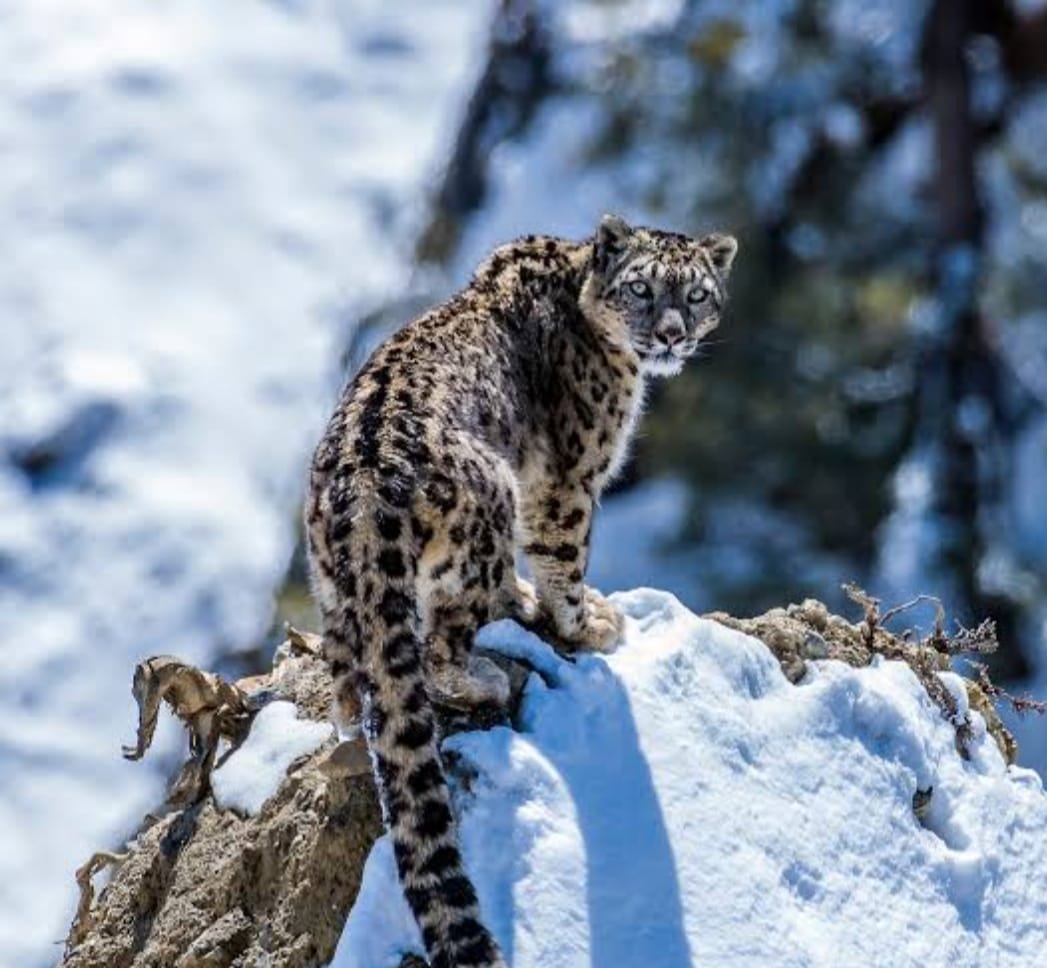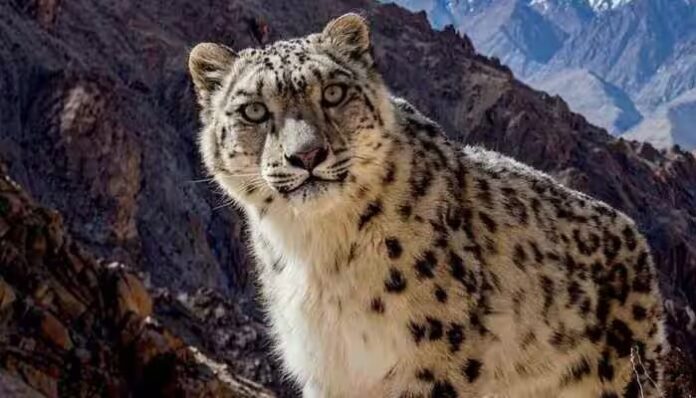Snow leopards were spotted in the Nanda Devi Range of Garhwal Himalaya, part of the Himachal Pradesh and Ladakh region.
BI News, Nanital: The snow leopard (Panthera uncia), one of the most threatened felids distributed along the high-altitude mountains in the Himalayas, has experienced a steady population decline in most of its distribution range due to the loss of suitable habitats, anthropogenic activities, and retaliatory killings. We undertook the genetic assessment of the snow leopard in the Western Himalaya, India, and identified 18 unique individuals. The snow leopard populations exhibited moderate genetic variability, i.e., effective number of alleles = 3.96 ± 0.004, observed heterozygosity = 0.539 ± 0.038 and no variation at mtDNA. We found the snow leopard populations under panmixia, possibly due to the long-ranging behavior and dispersal patterns. We present the first population genetic account of the snow leopard from the Western Himalayas and discuss the importance of non-invasive genetics in monitoring the snow leopard population in the tough terrain of the trans-Himalayan region of India.Snow leopards are usually found at the height of more than 12,000 feet while Dar village is located at nearly 11,120 feet. The animal might have descended from normal habitat to heavy snowfall in the higher reaches .

Snow leopards face a severe prospect of both a Shrinking range and fragmented populations as climate change makes their Himalayan homeland less hospitable. Bikram Shrestha is a leading snow leopards researcher in Nepal, where he says it’s possible there may not be habitable space for the big cat as temperatures rise.The impacts of climate change are amplified across the mountains and steppes that snow leopards call home, where average temperatures are predicted to rise at a rate more than twice the global average. Wild prey herds are threatened by poaching, new diseases ,and pets being introduced into the already fragile ecosystems.
Habitat evaluation constitutes an important and fundamental step in the management of wildlife populations and conservation policy planning. Geographic information system (GIS) and species presence data provide the means by which such evaluation can be done. Maximum Entropy (MaxEnt) is widely used in habitat suitability modeling due to its power of accuracy and additional descriptive properties.
Jharkhand Government Initiates Symbolic Recognition Process for Activists in Villages
To survey snow leopard populations Precipitation in the driest quarter, ruggedness, elevation, maximum temperature of the warmest month, and annual mean temperature is the main environmental factors influencing habitat suitability for snow leopards, with contribution rates of 20.0%, 14.4%, 13.3%, 8.7%, and 8.2% respectively. The suitable habitat area extended for 7001.93 km2, representing 22.72% of the whole reserve.


The regions bordering Nepal were the main suitable snow leopard habitats and consisted of three separate habitat patches. The result revealed that precipitation, temperature conditions, ruggedness, and elevations of around 4000 m influenced snow leopard preferences at the landscape level in QNNR.
It is time to work further research and cooperation with Nepal to evaluate habitat connectivity and to explore possible proxies of population isolation among these patches. Furthermore, evaluation of subdivisions within the protection zones of QNNR is necessary to improve conservation strategies and enhance protection.









